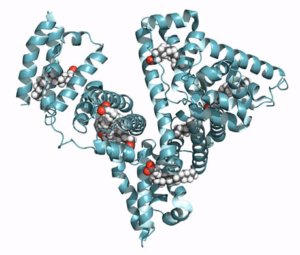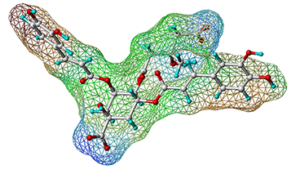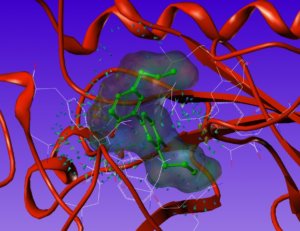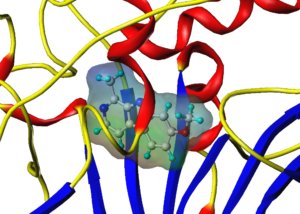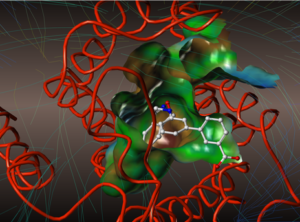How In Silico Screening Can Guide Product Development in Cosmetics
Product development in cosmetics can be costly and time-consuming, especially when it comes to discovering new active ingredients. This is why more cosmetics brands are turning to in silico screening, a powerful technology that relies on virtual modeling and molecular databases. Whether you are looking for new active ingredients or wish to find new applications for existing compounds, in silico screening can be used to guide your cosmetic product development process.
Let’s take a closer look at how in silico screening works, and what benefits it can offer in cosmetic product development.
What is In Silico Screening?
Broadly, in silico means biological experiments conducted on a computer or via computer simulation. In silico screening uses virtual screening tools to make predictions about the behavior of different compounds. It achieves that by modeling the interactions between chemical molecules and their biological targets. For example, in pharmacology, in silico screening may show how a molecule with potential anti-cancer properties would affect certain proteins involved in cancer processes.
In silico screening tools work in tandem with a simulation software and databases that store information about molecules and their interactions with proteins. Examples are active ligand databases, the database of the European Molecular Biology Laboratory, which contains information about over 5 million interactions, and the GPDB database, which is exclusively dedicated to natural molecules and plant extracts.
In silico screening can be used in any area that relies on biological research, including drug development, food toxicology research, cosmetics development, and more. Using in silico screening tools can help:
- identify potentially active molecules for a given target, or vice versa
- indicate the biological activity and health application of compounds
- guide product development along the different potential R&D choices
- reposition an existing product.
How Does In Silico Screening Work?
The two main approaches used for in silico screening are ligand-based and structure-based. When structural data are available for the ligands and the target, both methods can also be combined.
Ligand-Based Virtual Screening (LBVS)
A ligand is a molecule that binds to a target protein. Using a known molecular structure, in silico solutions can search molecule and ligand databases for compounds with similar chemical structure and known biological activity. This is particularly useful when researchers have a certain compound in mind and want to find similar compounds with stronger drug-like or bioactive properties, or other advantages.
Structure-Based Virtual Screening (SBVS)
When researchers know the biological target of their desired product, the 3D structure of that target (receptor or enzyme) can be used as the basis for screening. Using virtual models, in silico tools simulate binding of a candidate molecule to a protein target (“docking”), and estimate the likelihood of successful interaction.
The “inverse docking” relies on the same principle, but uses a molecule with a known chemical structure to find potential biological targets. This allows to predict the biological activity of the molecule and its application in healthcare or cosmetic product development.
What Are the Applications and Benefits of In Silico Screening in Cosmetic Product Development?
In silico virtual screening tools are a powerful tool in the arsenal of cosmetic product development. They can be used to guide your product research through:
- Identifying active molecules
- Discovering new applications of known molecules
- Finding targets that can interact with your molecules / molecules that can act on your targets
- Determining biological activities and principal applications
- Selecting the most relevant in vitro assays, and more
Here are some of the benefits that in silico screening offers to cosmetic product development:
Select the most relevant in vitro tests
By taking the screening process to the virtual space, in silico screening greatly increases the success of laboratory experiments needed, saving large amounts of time and resources. The ability to predict the biological activity and molecule efficacy at an early stage makes it possible to rationalize in vitro evaluations (selection of the most relevant assay and model), which maximizes their success rates and greatly improves the cost- and time-effectiveness of the product development cycle.
Product Repositioning / New Applications for Active Ingredients
As many molecules are active against multiple targets, in silico screening can be used to find new applications for known compounds. This is made possible by the vast body of information accumulated about the structure of proteins and molecules, combined with the advances in computer science. Through in silico screening, researchers can discover new biological activities of the active ingredients already present in your library, opening up opportunities for repositioning your product on another claim.
Discovery of New Active Natural Molecules Ingredients
Today, consumers increasingly value “all-natural” cosmetics and skincare products. Indeed, many of the cosmetics and pharmaceuticals used today use molecules and compounds found in nature, and the past decade saw an increasing amount of research into natural products for the purposes of discovering new bioactive ingredients. Thanks to the existence of databases of natural molecules, such as the GPDB, in silico tools can be used to discover new active ingredients derived from natural sources, such as plant extracts.
These are only some of the benefits that in silico screening has to offer to the cosmetics industry. It is a powerful technology that can help your cosmetics brand guide product development, sustain patent applications, and innovate and differentiate your marketing offer.
Find an In Silico Screening Program to Suit Your Needs
At Bioalternatives, we are committed to developing effective in vitro alternative options to animal experimentation methods, by offering a full range of solutions for the development of active ingredients and cosmetic formulations.
We offer customized technical solutions to guide your product research and support the claims of your cosmetic products, and powerful in silico screening tools (SELNERGY) to guide you along the different potential R&D routes. Our solutions allow digital modeling of interactions, screening across multiple molecules or biological targets, and classification and selection of the best candidates in order to rationalize in vitro assays at a later stage.
Choose from two different databases for virtual screening: the Ambinter database, with access to over 30 million of natural and synthetic molecules; or GPDB, a unique worldwide ethnopharmacological database containing 300,000 natural compounds with links to their cognate sources (eg plants, micro-organisms,…), traditional uses, biological data and protein targets.
With extensive experience in cosmetic product testing and state-of-the-art facilities, we are pleased to offer you dedicated project management support and consulting for your R&D process.
Ready to discuss a research and testing program that will suit your business’s needs?

